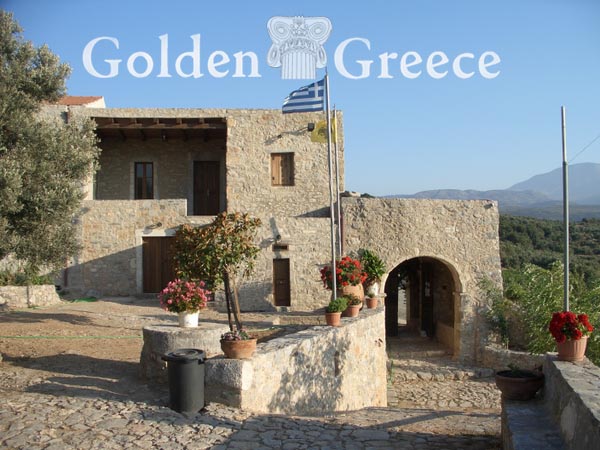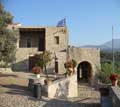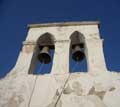
This is the Monastery of the Transfiguration of Sotiros Halepas, which is located to the east of Kambos Doxaros. It is of the fortress type with a pillar on the southwest side. It is unknown when the first one was built. The one that survives today bears a founding inscription dated 1673. The courtyard area impresses us mainly for the immense view, which mitigates our sadness from the ruins and the desolation of the Monastery. At its eastern end there is the old two-aisled church, dedicated to the Nativity and Transfiguration of Christ. The cells, the abbot and the common areas were located in the southeast wing, while in the west were the stables for the animals.
The first known written information about the history of the Monastery comes from five Venetian notarial documents from the period 1555-1625, which refer mainly to the assets of the monastery. In all the documents the Monastery is mentioned as female. This important information is also reinforced by a letter from the nuns, probably to the patriarch of Alexandria Meletios Pigas (1590-1601), to whom they express their views on the conflict they had with the abbess Ypomonny. The dramatic information of the Rethymnon poet Marinos Tzane Mpounialis is thus confirmed, that the Turks dishonored and slaughtered the nuns of Christos and the nearby village of Agia Marina. The Cretan War cost both monasteries many disasters and the nuns were slaughtered or forced to leave them. Faced with the risk of their properties being looted, some monks settled in the Monastery of Christ and took over its management. This fact is confirmed by the founding inscription of the pillar (1675), where the name of Ieremios Sgouros is mentioned as the new founder of the Monastery. In 1676 it became a Stavropigian, but it was already a member of the Bosakou Monastery. Its history begins to be illuminated again after the revolution of 1821. The evidence that has been saved reveals its participation in the national struggle, which cost it a new disaster. The reconstruction of the Monastery was a difficult task. But it was set as the first priority of the now abbot Nestor Kokkinidis. In 1841 the Monastery was one of the 41 monasteries still operating in Crete. In the same year, Patriarch Anthimos IV confirmed its crucifixion value, which he renewed in 1850. Nestoras Kokkinidis remained in the abbotship until 1856. He was succeeded by Pope George Stratigis who became a hieromonk and received the name Gerasimos. The period of the abbotship of Gerasimos Stratigis was adventurous. The Monastery faced serious financial problems, which were made even bigger by the revolution of 1866. After the revolution, the debts of the Monastery were already "unmanageable". The appointment of the abbot of the Monastery of Saint Panteleimon, Fodele Neophytos Pediotis, as caretaker of the Monastery of Christ, from the beginning of 1871, was done mainly to reduce debts and restore order to the monastery. The worthy elder was succeeded in the same position by the abbot of Bosakos Monastery Melchizedek Bardiambasis, perhaps from the very next year, for the same purpose. Probably in 1885 the hieromonk Iakovos Ploumis was transferred from Bosakou Monastery and assumed the abbotship of the Monastery of Christ. During the last Cretan revolution (1897-1898) he formed his own revolutionary group and allocated all the income of the Monastery to the struggle.
In 1900 the Monastery was deemed dissolvable and in 1935 permanent. But it was already too late. The end of the abbotship of Iakovos Ploumis also marked the end of the arrival of new monks. At the end of the 1950s the Monastery was completely deserted. In 1993, a new abbot was formally appointed, who resides in the Monastery of Diskouri, which has been designated its share.
Editor: Niki Kalopaidis









